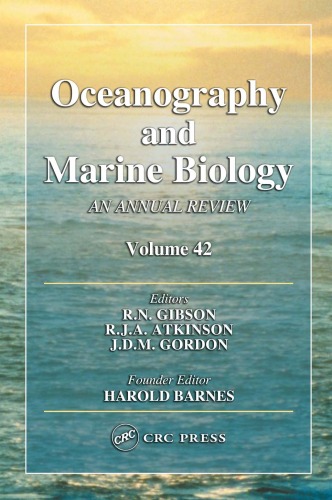

Most ebook files are in PDF format, so you can easily read them using various software such as Foxit Reader or directly on the Google Chrome browser.
Some ebook files are released by publishers in other formats such as .awz, .mobi, .epub, .fb2, etc. You may need to install specific software to read these formats on mobile/PC, such as Calibre.
Please read the tutorial at this link: https://ebookbell.com/faq
We offer FREE conversion to the popular formats you request; however, this may take some time. Therefore, right after payment, please email us, and we will try to provide the service as quickly as possible.
For some exceptional file formats or broken links (if any), please refrain from opening any disputes. Instead, email us first, and we will try to assist within a maximum of 6 hours.
EbookBell Team

4.3
28 reviews
ISBN 10: 084932727X
ISBN 13: 9780849327278
Author: R N Gibson, R J A Atkinson, Lance van Sitter, Roy Melville Smith
Ever-increasing interest in oceanography and marine biology and its relevance to global environmental issues creates a demand for authoritative reviews summarizing the results of recent research. Oceanography and Marine Biology: An Annual Review has answered this demand since its founding by the late Harold Barnes more than forty years ago. Its objective is an annual consideration of basic areas of marine research, dealing with subjects of special or immediate importance, adding new subjects as they arise.The volumes maintain a unified perspective on the marine sciences. Physical, chemical, and biological aspects of marine science are dealt with by experts actively engaged in these fields. This essential reference text for researchers and students in all fields of marine science finds a place in libraries of marine stations and institutes, as well as universities. It consistently ranks among the highest in impact factors for the marine biology category of the citation indices compiled by the Institute for Scientific Information.Volume 42 contains analysis on convective chimneys in the Greenland Sea, spawning aggregations of coral reef fishes, exopolymers (EPS) in aquatic systems, the marine insect Halobates, and much more.
oceanography and marine biology
oceanography and marine biology by dw townsend
oceanography vs marine biology salary
do marine biologists go in the ocean
difference between oceanography and marine biology
Tags: R N Gibson, R J A Atkinson, Lance van Sitter, Roy Melville Smith, Oceanography, Marine